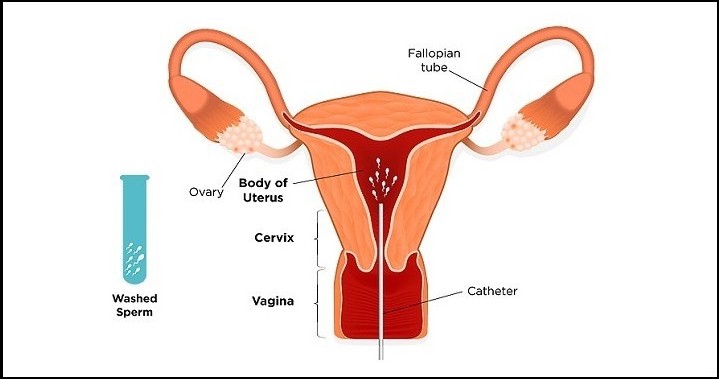
Fertility treatment intrauterine insemination (IUI)
- Description
- Faq's
Intrauterine insemination (IUI) is a form of assisted conception treatment. During IUI, your doctor will place selected, washed sperm into your womb (uterus) and near to your egg at your time of ovulation. This procedure is sometimes combined with fertility drugs to increase your chances of conceiving.
Could IUI help me get pregnant?
IUI is usually straightforward and painless, but it’s no longer recommended as a first-line fertility treatment. It may help you as a couple if:
- You and your partner find it very difficult or are unable to have sex because of disability, injury, or a psychosexual problem.
- You need extra help to conceive, for example, if your partner has a sexually transmitted viral infection and needs sperm washing to protect you and your potential child from the disease.
- You’re in a same-sex relationship and want to use donated sperm to have a baby.
Some fertility problems, such as mild endometriosis, a mildly low sperm count or sperm quality, or unexplained infertility used to be treated with IUI. However, it is no longer recommended for these problems, as research found that success rates using IUI were no better than just carrying on trying to get pregnant naturally.
If you and your partner haven’t conceived after two years of trying, your doctor is likely to recommend IVF. If you have any cultural or religious objections to IVF then you may still be offered IUI. For IUI to work, your fallopian tubes must be open and healthy. If your doctor suspects you have tubal damage or if you don’t become pregnant after having tried IUI, she may recommend that you have what’s called a tubal patency test. This will help to identify any problems or blockages in your tubes and can be done using one of the following methods:- laparoscopy, which is a form of keyhole surgery
- hysterosalpingo-contrast sonography (HyCoSy), which uses vaginal ultrasound
- hysterosalpingography (HSG), which is a form of X-ray
If you do have any blockages, you may be recommended IVF, or it may be possible to remove the blockage surgically.
How is IUI carried out?In most cases, IUI is a straightforward treatment that does not involve the use of fertility drugs. If you do take fertility drugs it's called a stimulated cycle, because the drugs stimulate ovulation. If drugs are not used it's called an unstimulated cycle, or natural cycle.
Stimulating ovulation with IUI is not recommended by the NHS, because there is a much greater risk of a multiple pregnancy when taking fertility drugs. However, it may still be offered to you at a private fertility clinic. Although having twins or more may sound appealing, multiple pregnancies increase your risk of miscarriage and other pregnancy complications. If fertility drugs are needed, IVF is usually recommended as an alternative because there is more control over the whole process and multiple pregnancy rates can be lower as a result. In unstimulated cycles, IUI is timed to take place at the time when you’re naturally ovulating. Your doctor may ask you to use an ovulation predictor kit to work this out, or she may track your cycle using blood tests. IUI is usually done between day 12 and day 16 of a natural menstrual cycle, but the exact day will depend on your individual cycle. If your fertility specialist has offered IUI during a stimulated cycle, you’ll probably be given fertility drugs in the form of tablets or injections. Clomifene citrate is usually the first-choice drug, although sometimes gonadotrophins are used. You’ll start taking the drug near the beginning of your menstrual cycle with the aim of stimulating your ovaries to develop up to two mature eggs for fertilisation. An ultrasound scan will help to check that there aren’t too many eggs maturing. It also ensures insemination takes place at the best time. You may ovulate naturally, or be given an injection of a hormone called human chorionic gonadotrophin (hcg) to bring it on. Sperm is then inserted into your womb within around 36 hours to 40 hours after the hcg injection. Your partner will be asked to provide a sperm sample on the day of the treatment. The sample will be washed to remove the fluid surrounding the sperm, then the best-quality and most mobile sperm will be separated out for use in the procedure. Getting ready for the insemination is a bit like having a smear test, as you lie down on your back while your doctor inserts a speculum into your vagina to keep your vaginal walls apart. Using a catheter (soft flexible tube) through your cervix, your doctor will then put the sperm directly into your womb near a fallopian tube. This is the passage the egg travels along from your ovary to your womb. Your doctor may ask you to lie still for about 10 minutes to 15 minutes after IUI . Then you’re free to carry on life as normal. You’ll be asked to take a pregnancy test in about two weeks.